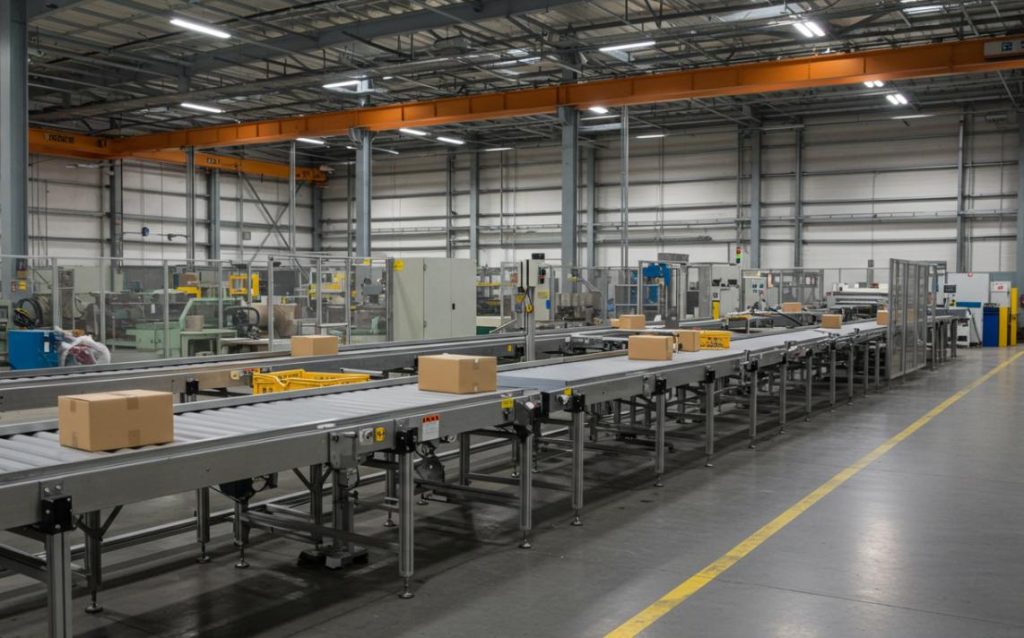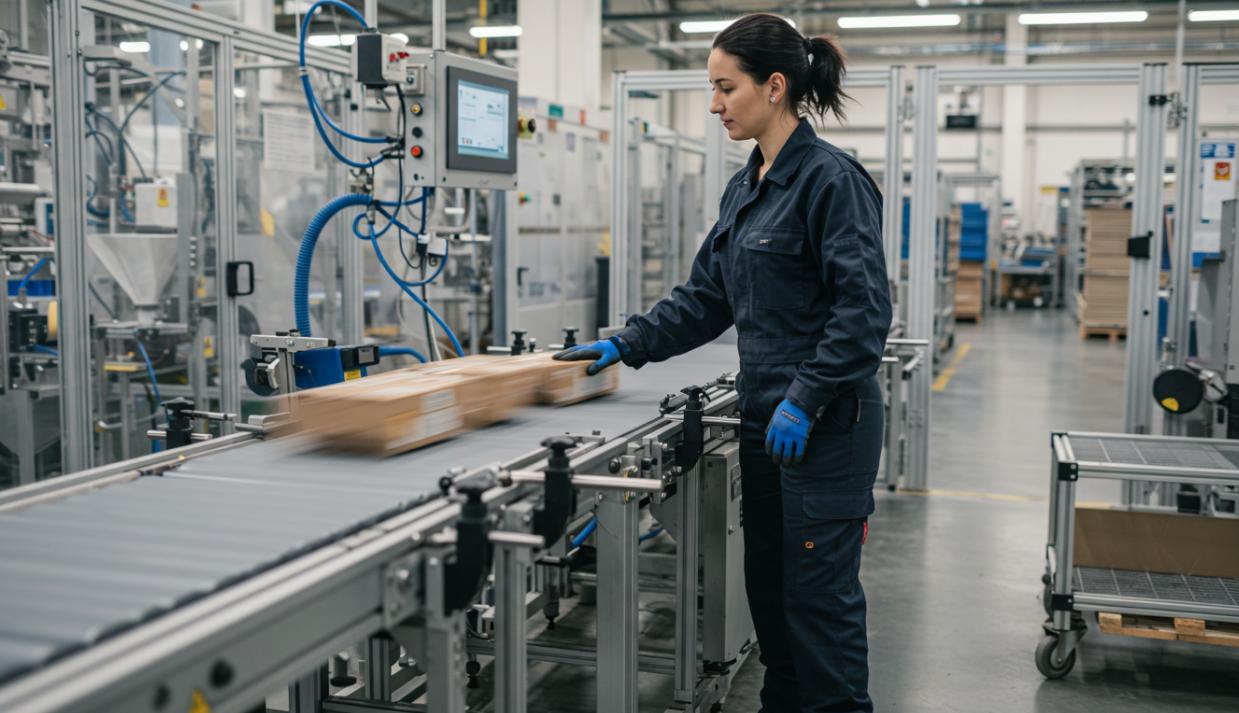In the pursuit of greater efficiency and sustainability, many companies are adopting horizontal conveyors. These systems streamline operations while significantly lowering environmental impact. This article explores how horizontal conveyors can enhance productivity and support eco-friendly practices. Understanding their advantages allows businesses to make informed decisions that support both operational goals and sustainability initiatives.
Horizontal Conveyor Features
Horizontal conveyors move products across a flat surface from one location to another within a facility. Their simple design delivers major advantages in terms of reliability, energy efficiency, and reduced maintenance needs.
Unlike inclined or vertical conveyors, horizontal models consume less energy and experience less mechanical stress. This extends their lifespan and reduces downtime, aligning with sustainability goals.
How Horizontal Conveyors Enhance Production Efficiency?
A key benefit of horizontal conveyors is improved production efficiency. These systems run smoothly, requiring less power and fewer interventions compared to more complex conveyor types. Their design minimizes the risk of mechanical failures, which often cause costly delays.
Horizontal conveyors are also highly customizable. Facilities can tailor them to fit unique layouts and operational workflows, maximizing available floor space and improving material flow. This adaptability contributes to more streamlined, high-performing production lines.
Reducing Energy Consumption and Waste
Energy savings are central to sustainable operations. Horizontal conveyors use energy-efficient motors and components such as variable frequency drives (VFDs), which adjust motor speed based on load demand. This reduces unnecessary energy use during low-activity periods.
Durability is another strength. These systems are built from high-quality materials that resist wear and reduce the need for frequent replacements. This not only cuts costs but also minimizes waste and lowers the carbon footprint associated with manufacturing spare parts.
Key Features of Horizontal Conveyors
The following table outlines essential features that make horizontal conveyors efficient and sustainable:
| Feature | Description |
|---|---|
| Energy-Efficient Motors | Reduce electricity usage while maintaining consistent performance. |
| Variable Frequency Drives (VFDs) | Allow speed adjustments, reducing energy during low-demand cycles. |
| Smart Sensors | Automatically adjust operation based on real-time load and system conditions. |
| Modular Design | Supports easy customization for different facility layouts. |
| Low-Maintenance Components | Extend lifespan and reduce resource use over time. |
Real-World Applications of Horizontal Conveyors
Horizontal conveyors are widely used across sectors like warehousing, manufacturing, food processing, and e-commerce. In distribution centers, they help automate picking and packing while reducing manual handling. Integrated with warehouse management systems (WMS), they support real-time tracking and improved inventory control.
In manufacturing environments, horizontal conveyors maintain steady material flow, ensuring minimal production interruptions. They also reduce the need for forklifts and manual transport, lowering safety risks and emissions.
The Role of Maintenance in Sustainability
Regular maintenance is essential for ensuring that horizontal conveyors operate efficiently and sustainably. Well-maintained systems experience fewer failures, which reduces energy waste and prevents costly downtime.
Predictive maintenance tools, such as sensor-based monitoring, can alert operators to wear or potential issues before they escalate. This proactive approach extends the system’s life, supports sustainability, and lowers total ownership costs.
Maximizing Sustainability Through Smart Design
Design plays a pivotal role in the environmental performance of conveyor systems. Choosing lightweight but durable materials reduces energy usage during operation. Incorporating recyclable or reusable components further minimizes the impact on landfills and manufacturing resources.
A well-engineered horizontal conveyor balances productivity with minimal energy demand. Companies that consider both performance and environmental impact during the design phase see long-term savings and sustainability benefits.

Empowering Employees with Knowledge
Shifting to horizontal conveyors is not just a technical change, it requires a cultural shift. Employees must be trained on the proper use and maintenance of the new systems to maximize benefits.
Organizations that promote awareness of green practices often see more innovation from their teams. Staff who understand the environmental goals behind equipment changes are more likely to contribute ideas that improve both efficiency and sustainability.
Measuring Success in Sustainability and Production
To evaluate the effectiveness of horizontal conveyors, businesses should track performance metrics. These may include:
- Energy savings (kWh reductions)
- Downtime reductions
- Maintenance frequency and cost
- Output improvements (units per hour)
- Waste reductions (material discarded or replaced)
Using this data helps companies refine their operations and make better investment decisions. It also provides valuable insights for reporting to stakeholders and demonstrating corporate responsibility.
Partnering with the Right Supplier
Working with a specialized provider, like Cog-Veyor Systems, ensures proper system selection, installation, and long-term support. Experts can tailor conveyors to your unique operational needs while guiding sustainable design choices.
Look for a partner that offers custom solutions, ongoing technical support, and consulting services focused on energy efficiency and sustainability goals.
https://www.youtube.com/watch?v=Ox8Y7FAKJPs
